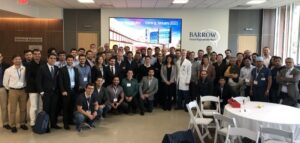A Dying Art?
Open vascular neurosurgery has come under siege as the rapidly expanding field of endovascular neurosurgery has offered appealing, less invasive alternatives. Novel devices flood the market along with practitioners from other disciplines like neurology and neuroradiology, resulting in a decentralization of endovascular neurosurgery into community hospitals with only the most difficult lesions referred to tertiary centers for microneurosurgery. Training the next generation of neurosurgeons to handle these complex cases in the face of diminishing case volume is a growing challenge. How will today’s young vascular neurosurgeons acquire the proficiency to manage these cases? The two fundamentals to mastering the craft in the current environment are cognitive training and technical skill development.
Preparing for Battle: Cognitive Training
 The mental preparation for a specific case is significant and essential to a favorable outcome. It begins with thoughtful analysis of symptoms and signs, diagnostic studies, differential diagnosis, treatment options and surgical anatomy. The thorough review of a vascular case is like a war room assessment of the enemy and battle simulations. Like battles, surgical interventions are won or lost before entering the operating room.
The mental preparation for a specific case is significant and essential to a favorable outcome. It begins with thoughtful analysis of symptoms and signs, diagnostic studies, differential diagnosis, treatment options and surgical anatomy. The thorough review of a vascular case is like a war room assessment of the enemy and battle simulations. Like battles, surgical interventions are won or lost before entering the operating room.
- What is the optimal surgical approach and technique for dealing with the pathology?
- What preparations and contingency plans are needed?
- What information is missing, and what are the risks?
- Is there an alternative that would be better for the patient?
Often the most challenging moments of a particular case are in this cognitive phase when these decisions are made; at Barrow, a morning daily conference is held in which the day’s operative cases, upcoming scheduled cases and new consults from around the world are discussed. This forum integrates radiological evaluation and surgical anatomy with discussions of current literature, clinical judgment and strategy. We live in a time when anatomy can be appreciated with cadaveric prosections and 3D graphics, videos transport us to operating rooms around the world, the internet connects us to clinical evidence with a few clicks and computers display an individual’s high-resolution anatomy and pathology from multiple perspectives. The tools to master the cognitive elements of training facilitates the current generation of trainees’ ability to achieve proficiency.
Battle Plan Execution: Technical Skill
A perfect battle plan will succeed only with the proper skill and execution; development of proper technique is critically important. Vascular neurosurgery demands a high level of dexterity and technical skill because these qualities translate to atraumatic Sylvian fissure dissections, minimal use of retractors, delicate handling of vascular pathology, avoidance of intraoperative ruptures and strokes and more favorable outcomes. Although the demands are high, the techniques are strikingly basic. The dissection of an aneurysm may only require a microscope and four instruments: microscissors, bipolar forceps, #6 Rhoton dissector and sucker. And yet, these instruments must be wielded in such a way to economize steps, dynamically retract, respect tissue planes and control the aneurysm. In addition, the simple clipping of a posterior inferior cerebellar artery aneurysm may not go according to plan due to non-saccular anatomy, and a bypass may suddenly become the best treatment solution. In this case, an entirely different skill set is required. Microsurgical skills are essential, and most trainees view the operating room as the forum for acquiring them. In this climate of diminishing caseload; however, other innovative options must be created.
Venues for Learning Outside the OR
- Anatomy and Technique Courses
- Cadaver Labs
- Simulation
- Bypass Stations
Easily accessible arenas for regular and deliberate practice is ideal because technical skill development requires repetition, comfort with the microscope and instruments and the opportunity to grow at an individualized pace, not necessarily the accelerated pace of a course.
Technical skills are best learned by maximizing the time spent in the operating room. While everyone wants to learn from the most complex cases – the aneurysms and AVMs and bypasses –something can be gleaned from every case. The simple meningioma may yield invaluable time working under the microscope while the Chiari decompression may offer an opportunity to microsurgically perform a duraplasty. In addition to the hands-on experiences, much is learned from observing other neurosurgeons’ approach, demeanor, techniques, handling of complications and unique style.
Winning the Battle for Our Patients
As we move forward into this endovascular era and as the volume of open vascular cases diminishes, it has become increasingly important to preserve the microsurgical art by educating and inspiring future generations of neurosurgeons. Microsurgical operations and techniques lie at the core of neurosurgery and are a capability we cannot lose. It will require the commitment of a dedicated group of vascular neurosurgeons to develop their cognitive and technical skills and the commitment of neurosurgical educators to train their mentees in nontraditional and innovative ways.








